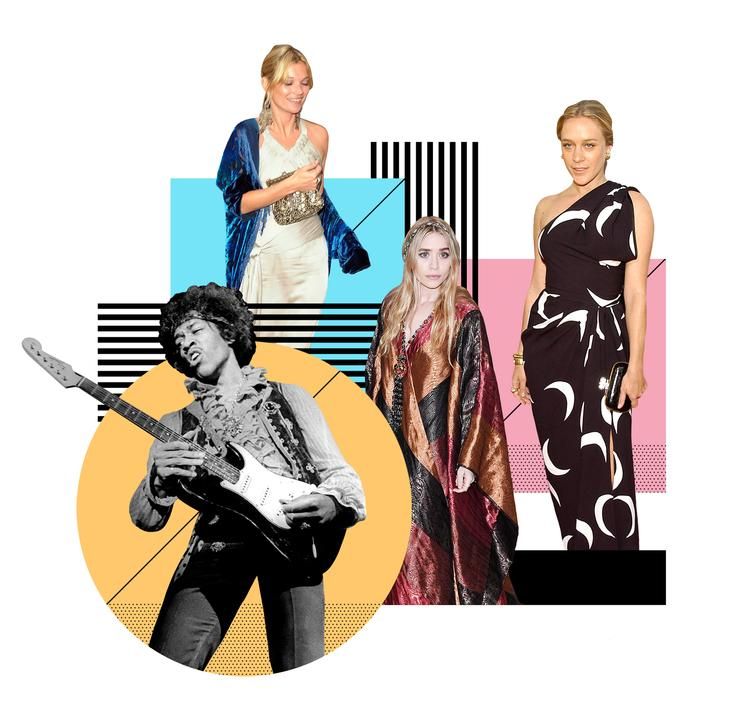Will We Buy Mostly Vintage Clothes in the Future?

Influential fashion sage Virgil Abloh has predicted that streetwear will die and shoppers will rely increasingly on secondhand clothes. Here, a look at the history of vintage fashion and what’s next.
When Virgil Abloh recently predicted streetwear’s imminent death, his declaration reverberated around the fashion sphere. Streetwear pretty much defines luxury fashion in 2020, so when one of its chief popularizers—the founder of hip label Off-White and influential artistic director for men at Louis Vuitton —pronounced it kaput, the industry’s unease was palpable.
Lost in the end-of-streetwear-days anxiety was Mr. Abloh’s kicker. Instead of buying new hoodies, he continued, shoppers would turn to secondhand clothes for more individual looks. That’s the bigger threat for the industry. Trends come and go, but a broad move away from buying new clothes would represent a seismic change in consumer habits. Due in part to concerns about the environmental impact of the fashion industry, the already thriving resale market is expected to more than double, from $24 billion in 2018 to $51 billion by 2023, according to research from consignment site ThredUp and analytics firm GlobalData.
The proliferation of sites like ThredUp, Rebag and the RealReal reflects consumers’ appetite for secondhand. “When I started nine years ago, people didn’t want you to know they had bought resale,” said Rati Levesque, the RealReal’s COO. “That stigma is completely gone. People buy to resell afterward.”
‘Historically, the impetus for buying used was economic, not aesthetic.’
Mr. Abloh’s comments reminded me of the video for “Thrift Shop,” the 2012 hit from hip-hop duo Macklemore and Ryan Lewis. The cast is shown ecstatically perusing the racks at a thrift store, supporting the thesis that secondhand is not only cost-effective, but “hella tight” (read: stylish). In real life, this idea has been translated into Goodwill’s “Curated by Goodwill NYNJ” concept, featuring merchandise chosen by stylists.
Thus it has not always been. The secondhand market is centuries old, but historically, the impetus was economic, not aesthetic. In the U.S., its roots lie in two seemingly unrelated late-19th-century phenomena: the mass production of clothing and the general acceptance of germ theory. These advancements meant that more people recycled their old clothes outside of the home, said Jennifer Le Zotte, the author of “From Goodwill to Grunge: A History of Secondhand Styles and Alternative Economics,” and an assistant professor of American history and material culture at the University of North Carolina. “A housewife in the 1870s might have taken her husband’s old shirt and remade it into a pinafore for her child. But in the 1890s, she was more likely to give it away.” Customers for these castoffs included immigrants who were eager to shed the clothes of the old country and look like Americans.
The term “thrift store” came into use in the 1920s, and, as the name suggests, reflected the idea that despite the largess that industrialization had bequeathed them, Americans had not forgotten the virtues of frugality. They could donate their old clothes, feel self-satisfied about it—and make room for new stuff (sound familiar?). By the postwar period, artists and nonconformists were appropriating secondhand fashion—the term “vintage” as applied to clothing was just creeping into use—to distinguish themselves from the gray-flannel-suited middle class.
Vintage clothes became a signifier of cool in the 1960s, when women like Jane Ormsby-Gore, an English aristocrat, used them to create eclectic looks. Unlike the hippies who also embraced secondhand, however, Ms. Ormsby-Gore was not grabbing whatever turned up at her local charity shop. In a photo from 1966, she wears a striped coat by Paul Poiret, one of the early 20th century’s most significant designers, and an 18th-century military belt. Ms. Orsmby-Gore’s professed rebelliousness was both informed and well-financed.
The grunge kids who shopped for thrift-store flannels and cardigans in the late 1980s and early 1990s lacked her level of refinement, but they were just as influential. For his spring 1993 grunge collection for Perry Ellis, designer Marc Jacobs co-opted their look and reimagined it in silk and cashmere, sparking outrage and costing him his job. Nevertheless, designers continue to reference the collection.
The legitimization of vintage as a path to self-expression exploded in the 1990s, when trendsetters like Kate Moss were regularly photographed in secondhand finds, and high-end vintage shops like Decades and Lily et Cie began getting credits in Vogue. On “Sex and the City,” the enormously influential Sarah Jessica Parker, costumed by Patricia Field, mixed vintage frocks with her Manolo Blahniks.
This was also a period, like now, when designers were strip-mining the past for inspiration. With retro-influenced clothes routine, vintage became a form of one-upmanship. “Fashion fanatics wanted the Ossie Clark pantsuit, not the one inspired by it. For true fashionistas, that was a point of distinction,” said Decades founder Cameron Silver.
Today’s secondhand shopper may consider individuality and cost as factors, but more important is responsibility. Smart brands acknowledge this. The North Face, for example, sells refurbished clothing under the Renewed label. Others, like Stella McCartney, have partnered with the RealReal. Everyone else… well, don’t say Virgil didn’t warn you.
Image: HOW SECONDHAND ROSE Advocates of vintage have included, clockwise from top left: Kate Moss in 2008; Chloë Sevigny in 2007; Ashley Olsen in 2018; Jimi Hendrix in 1967. ILLUSTRATION: MATT CHASE
Original Post: WSJ, Nancy MacDonell, 1/30/20